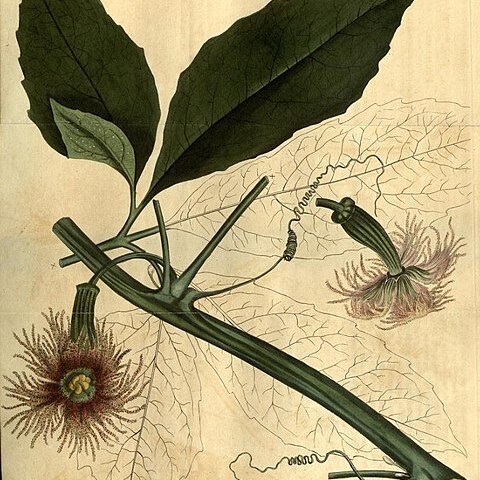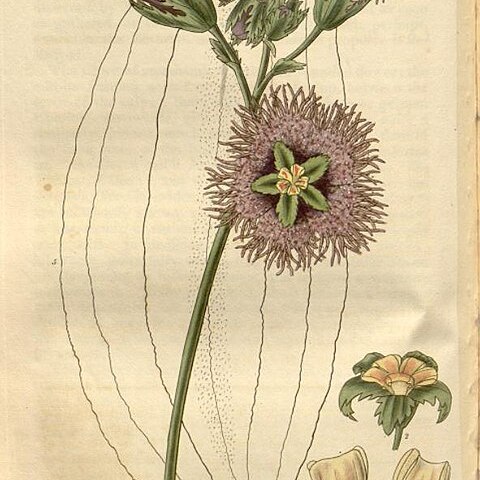A pumpkin family plant. It is a climbing woody vine. It can be 30 m or more long. It has fleshy roots. The leaves are smooth and alternate. They are divided into 5-7 leaflets like fingers on a hand. Male and female flowers are on separate plants. The flowers are purple. The seeds are inside a long gourd like a pumpkin. The seeds are flat and round. They are 4 cm across and 1 cm thick. There can be 500 seeds in a fruit.
male racemes 6–23·5 cm. long; bracts 4–10 mm. long, broadly ovate, dentate, pubescent, adnate to the pedicels; pedicels 0·5–5 cm. long. Receptacle-tube c. 0·5 mm. long, campanulate, densely shortly hairy; lobes 12–18 mm. long, ovate to lanceolate, acute, sometimes acuminate, shortly laciniate. Petals 2–3·5 cm. long, obovate-cuneate, crinkly, purplish, green-striped near the base.
Leaves petiolate, 5–7-foliolate; median leaflet 5·5–14 × 2–7·5 cm., oblong to broadly elliptic, acuminate, acute, ± sinuate-toothed especially in upper part, subglabrous, pinnately veined, lateral leaflets similar, the outermost smaller and occasionally lobed near the base; petiolules 1–6·5 cm. long; petioles 2·5–10 cm. long, glabrous or shortly hairy.
Seeds numerous, 3·3–3·5 × 3·2–4·0 × 1·0–1·3 cm., compressed; endocarpic sheath persistent, reticulate, obscuring the faintly verrucose testa.
Liane up to 30 m. or more in length; young stems herbaceous, glabrous, later softly ligneous, with thin pallid papyraceous bark.
Fruit 30–90 × 15–25 cm., green, ellipsoid with a lobed expanded base, bluntly 10-ribbed.
Female flowers solitary on 6·5–14 cm. long peduncles, somewhat larger than the male.
Probracts 3–20 mm. long, stalk-like below, expanded and cucullate above.


